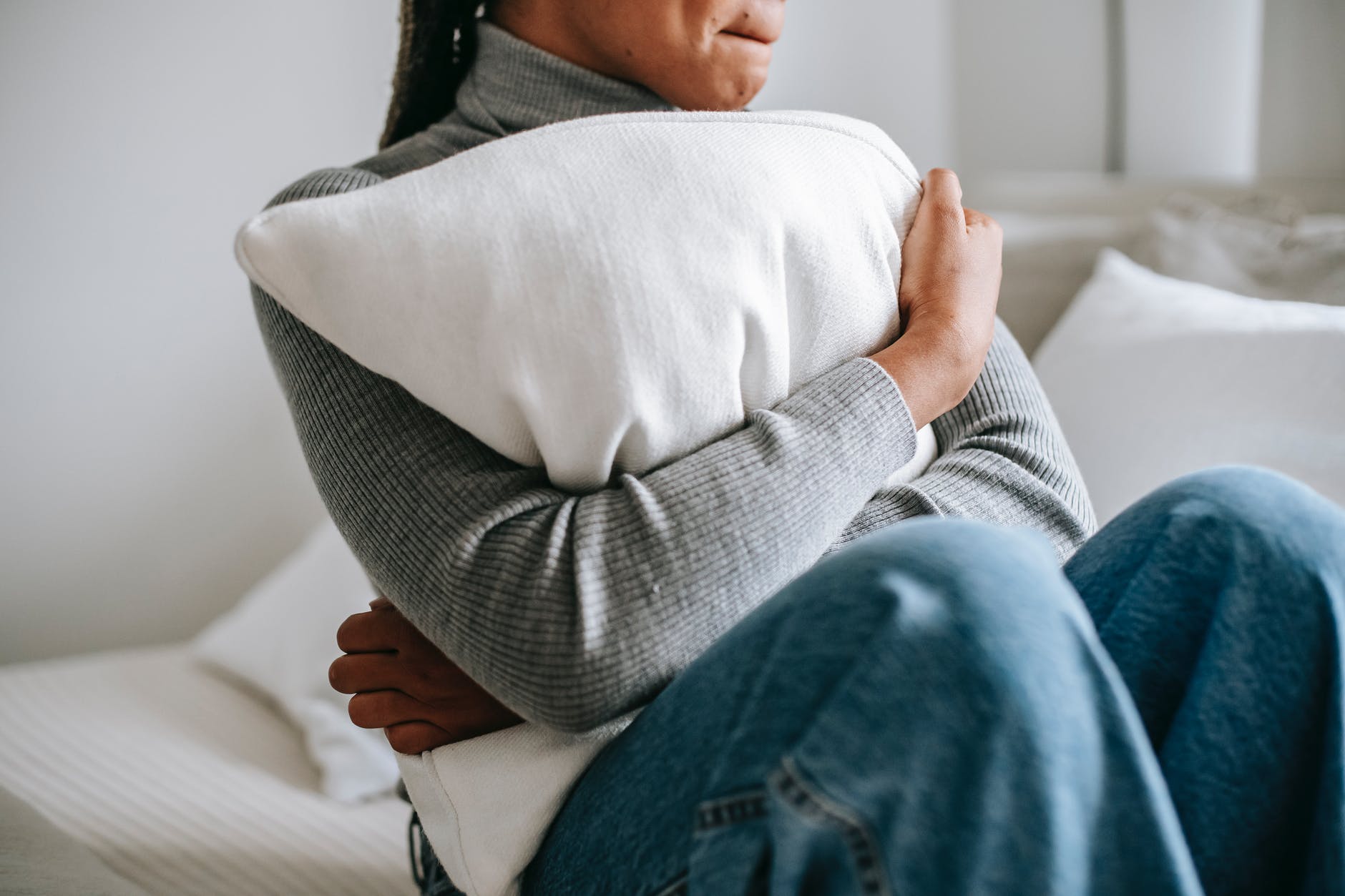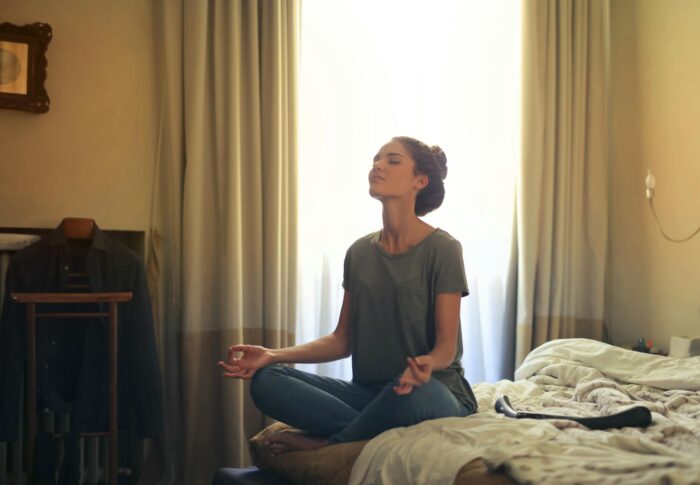
Symptoms Of An Anxiety Disorder Or Just A Worrier? How To Tell
DISCLAIMER: I am not a trained psychiatrist, psychologist, or counsellor. The information in this post is not intended to replace medical advice or give you a positive diagnosis of an anxiety disorder. If you suspect you may be suffering from anxiety, always see a trained professional to be officially diagnosed and, much more importantly, get the help you need. The information here is based on my own experiences of the symptoms of anxiety and how it felt for me. Not everyone may feel the same way. It does not mean there is nothing wrong. This post is for information only.
Hi Musers. Last time we talked about the symptoms of depression, and today we’re going to talk about anxiety. In the past, someone suffering from anxiety might have been called ‘ a bit of a worrier.” This is wrong for two reasons. First, it minimises and diminishes what is a very serious mental illness. Secondly, worrying or feelings of anxiety are far from the only symptoms of anxiety disorders. Today let’s clear up what anxiety is.
Generalised Anxiety Disorder
Generalised Anxiety Disorder (GAD) is not being worried about something, just as depression is not feeling sad about the loss of a job, the loss of a loved one, or the end of a relationship. Anxiety about an exam or a job interview or because your workload seems more than you can manage is perfectly natural. It’s in response to a particular stressor and will go once that event has passed.
GAD, on the other hand, is long-term anxiety about multiple events. If you suffer from GAD, you’ll likely feel anxious almost every day and find it very hard to relax. As soon as one worry resolves itself, your brain latches on to another and often, it may be a worry about something that is not ever going to happen. So what are the symptoms of GAD?
Emotional Symptoms
- Constant worry. About anything and everything.
- Feeling helpless as if there is NOTHING you can do to stop worrying.
- You can’t handle uncertainty of any kind. You need to know what’s going to happen at all times.
- Intrusive thoughts. Your worries keep breaking into your thoughts no matter what you do.
- Feelings of dread
Physical Symptoms
- Your body feels tense; your muscles are tight, and your body aches
- A bad stomach including cramps, nausea and diarrhoea
- Feeling restless, jumpy, and on edge
- Trouble falling asleep and trouble staying asleep because you can’t stop your mind racing.
Social Anxiety
As you may guess, social anxiety relates specifically to everyday interactions between people. Little things that may seem irrelevant or unimportant to a person who doesn’t have social anxiety can cause a tremendous amount of worry to someone who does. One example from someone I know was worry over bus fare. They fretted endlessly while waiting for the bus about whether they had the right amount, counting and recounting it. It’s not something most of us would even think of, but it was stressful for them.
Emotional Symptoms
- Worrying about everyday events, like meetings at work, talking on the phone, starting conversations or asking for something in a shop
- Worrying about and actively avoiding social activities, like meeting up with others, going to a party, or out for drinks
- Constant anxiety that you’ll do something stupid or embarrassing
- You feel afraid of being criticised, have low self-esteem and may struggle to look at other people
- You struggle to do things in front of others, and you worry they’re watching and judging you
Physical Symptoms
- Sweating, shaking, nausea, and a pounding heart
- You suffer from panic attacks. The fear takes you over, and you find it difficult to breathe
Panic Disorder
Panic disorder is a disorder on its own, but it can also develop as part of other anxiety disorders. Like the other disorders we’ve talked about, sufferers feel anxious, but feelings of panic and panic attacks accompany it. Most panic attacks only last a few minutes, but when you’re in the grip of total fear, that can seem like a lifetime.
My first experience of anxiety included panic but not a panic attack. I was in bed and finding it hard to fall asleep. This was worrying me a bit as I had work the next day. After a while, I did start to drop off, but every time I was almost asleep I felt a surge of panic and woke up. It was awful. To this day, I’ve no idea what caused it, and thankfully it’s never happened again, but that was the night my anxiety problems started.
Symptoms Of A Panic Attack
- A racing, pounding heart
- Struggling to breathe
- Feeling faint/fainting
- Dizziness
- Shaking
- Feeling nauseated or having a churning stomach
- Sweating
- Chest pains
- Feeling very hot or very cold
- Numbness or pins and needles in your arms or legs
- Having a very dry mouth
- An urgent need to go to the loo
- A whooshing or ringing sound in your ears
- Experiencing a feeling of complete dread
PTSD
Post-traumatic stress disorder (PTSD) has the same general symptoms of anxiety as GAD and Panic Disorder. However, PTSD is caused by a traumatic event or events in a person’s life. A person who has PTSD may experience nightmares and flashbacks of the traumatic event as well. This can affect their sleep and have a significant impact on their daily lives. Anyone who believes they have an anxiety disorder needs to seek professional help, but it is most important for those who have PTSD. Counselling may be required to talk through and process the trauma and begin to heal.
How To Treat Anxiety
There are a lot of options, including counselling, meditation, medication, CBT and exercise. Again, I always encourage anyone suffering from a mental illness, including anxiety, to seek medical help. I would like to explain one thing you can do, though, but it isn’t easy! Anxiety and panic are, to an extent, conditioned responses. If you feel anxious or afraid and leave that situation so you’ll calm down, this tells your brain that being afraid was the correct response. The more you do it, the more it reinforces your brain that it was right to be scared.
How do you counter this? It’s very simple; you need to stay in a situation that scares you until you calm down. No matter how long it takes. I told you it wouldn’t be easy! I know this is a huge ask, but it is the only way to retrain your brain. You might need to build up to it, staying a couple of minutes at first, then five, then ten and so on. You may also need to have done some work with your doctor or therapist before you even attempt it. Once you do it, though, it does make a huge difference! Please don’t take my word for it. Check out this post on Medium by Tim Denning. The topic is building self-confidence, but Tim talks a lot about overcoming fear, so it’s a great read.
Til Next Time
That’s it for now, my Musers. I hope talking about the symptoms of an anxiety disorder has helped you decide if you need to seek help or try to help someone you care about. I have other articles in the mental health section right here at CMooMuses, so please check them out. Til next time take care of yourselves.






